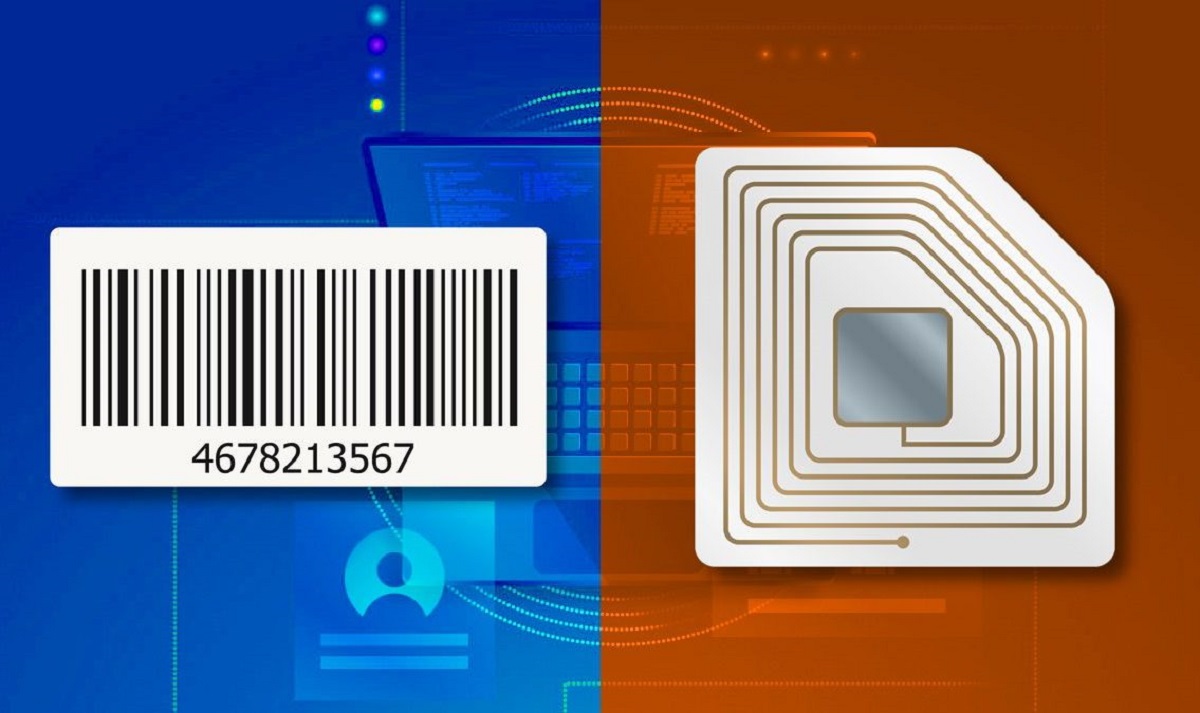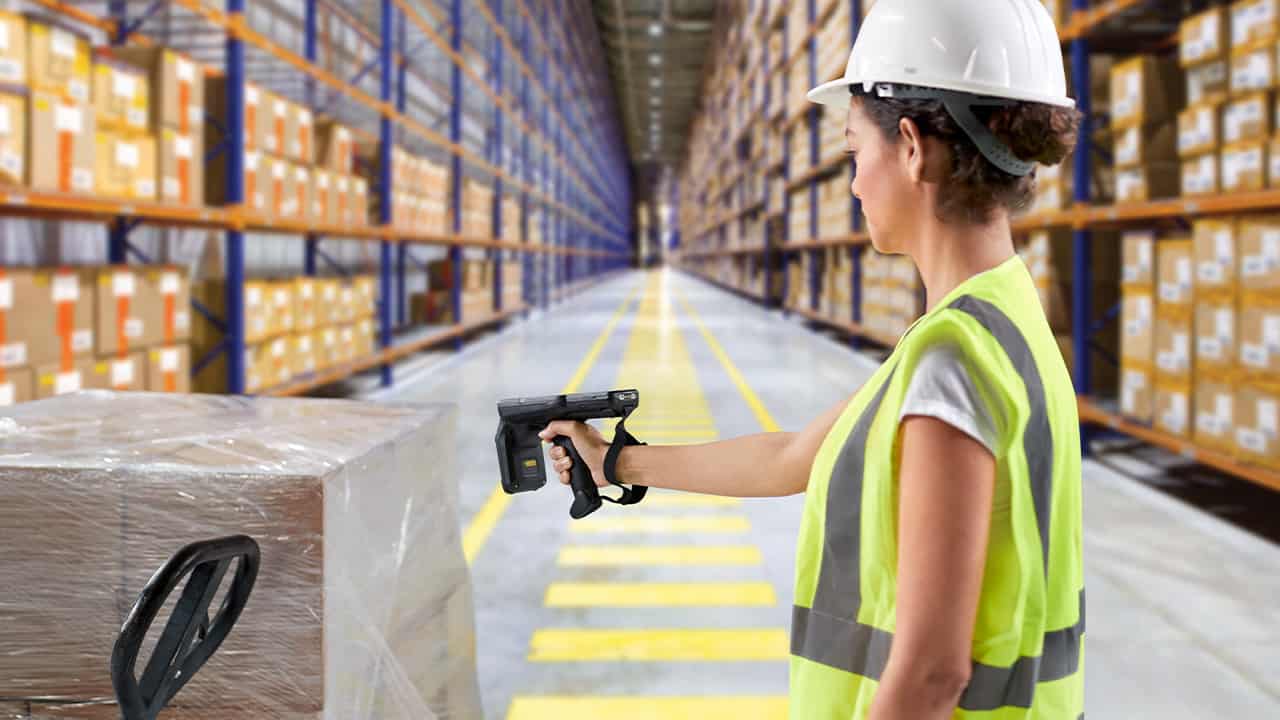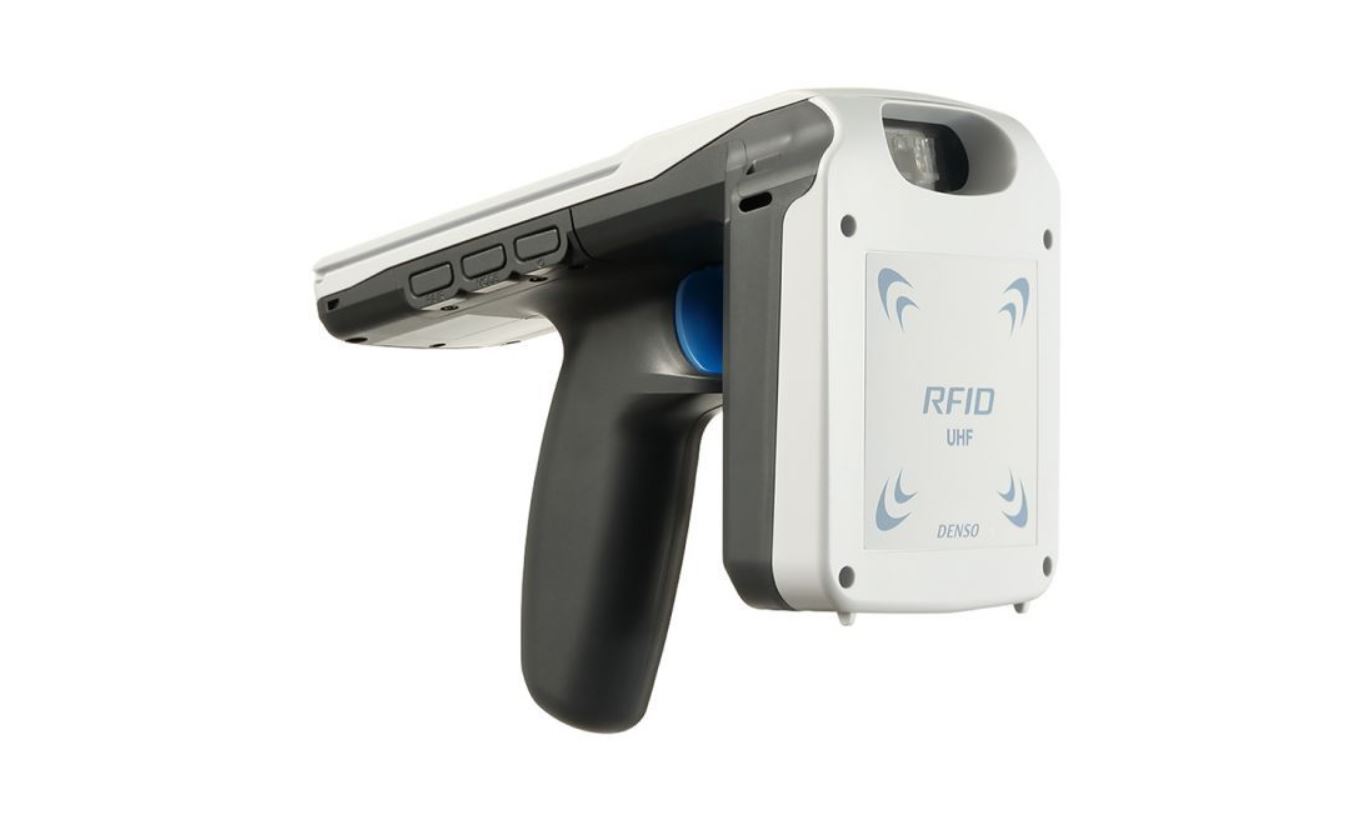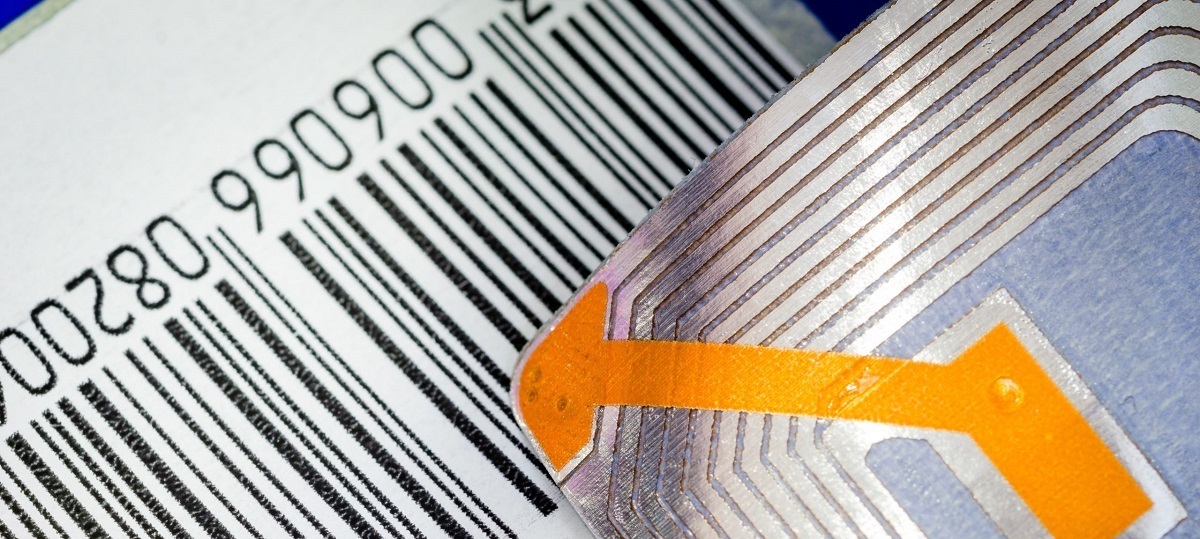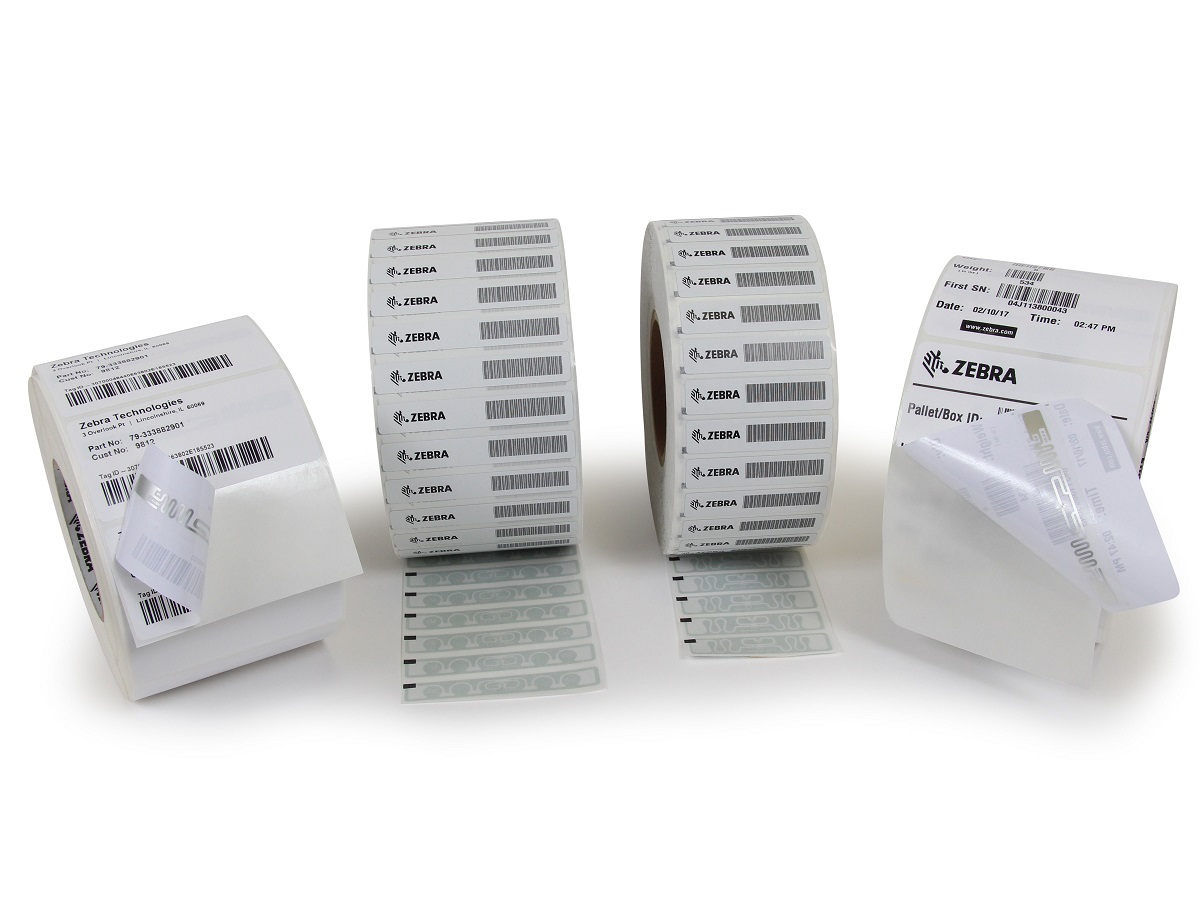Introduction
In today’s fast-paced and technologically-driven world, businesses and industries are constantly searching for ways to improve efficiency and enhance their operations. The need for accurate and efficient data collection has never been more crucial. For decades, barcodes have served as the standard method for tracking and identifying products. However, as technology continues to evolve, a more advanced solution has emerged: Radio Frequency Identification (RFID) technology.
RFID technology is revolutionizing the way businesses handle inventory management, supply chain logistics, and asset tracking. Unlike traditional barcodes, which require line-of-sight scanning, RFID technology enables real-time and non-contact identification and tracking of objects using radio waves. This innovative technology offers a wide range of advantages over barcodes, making it the preferred choice for many industries.
In this article, we will explore the key differences between RFID technology and barcodes, delve into the functioning of RFID technology, and highlight the numerous advantages that RFID offers over barcodes. We will also discuss the various applications and use cases of RFID technology, demonstrating its versatility and adaptability across different industries.
Prepare to discover why RFID technology is rapidly becoming the go-to solution for efficient and accurate data capture, with its ability to provide real-time information, enhance security, and improve operational efficiencies.
Definition of RFID Technology and Barcodes
Radio Frequency Identification (RFID) technology is a wireless technology that utilizes electromagnetic fields to automatically identify and track objects or individuals. It consists of two main components: RFID tags and RFID readers. RFID tags, also known as transponders or chips, are small devices that contain a unique identifier and can store and transmit data wirelessly. RFID readers, on the other hand, are devices that can capture and interpret the data transmitted by RFID tags.
Barcodes, on the other hand, are visual representations of data that are printed on labels or tags attached to products. They consist of a series of parallel vertical lines with varying widths, which represent different alphanumeric characters. When scanned by a barcode scanner, the data encoded in the barcode is decoded and transmitted to a computer system for further processing.
While both RFID technology and barcodes serve the purpose of tracking and identifying objects, they differ in terms of functionality and capabilities. RFID technology offers several distinct advantages over barcodes, primarily in terms of speed, data storage capacity, range, and accuracy.
RFID tags are capable of storing and transmitting significantly more data than barcodes, which are typically limited to a certain number of characters. RFID tags can carry a variety of information, such as product details, manufacturing date, expiration date, and even maintenance history. This comprehensive data storage capacity enables businesses to gather and analyze more information about their products or assets, facilitating better decision-making processes.
Furthermore, RFID technology allows for non-line-of-sight scanning, meaning that RFID tags can be read and detected even if they are located inside packages, boxes, or containers. This eliminates the need to individually scan each item, resulting in faster and more efficient inventory management.
Coming to barcodes, they require direct line-of-sight scanning, as the barcode scanner needs a clear view of the barcode to capture the data accurately. This can be time-consuming, especially when dealing with large quantities of items.
In summary, RFID technology and barcodes are both used for tracking and identifying objects. However, RFID technology offers several advantages over barcodes in terms of data storage capacity, range, and scanning efficiency. The next section will delve into how exactly RFID technology works.
How RFID Technology Works
RFID technology utilizes a combination of radio waves and unique identifiers to identify and track objects or individuals. The process involves three main components: RFID tags, RFID readers, and a backend system for data processing and analysis.
RFID tags, also known as transponders, are small devices that consist of an integrated circuit (IC) and an antenna. The IC contains a unique identifier and can store additional data depending on the type of RFID tag. The antenna is responsible for transmitting and receiving radio frequency signals.
When an RFID tag comes within range of an RFID reader, the reader emits a radio frequency signal. The RFID tag, powered by the radio frequency signal, responds to the reader by transmitting its unique identifier and any additional data stored on the tag. The reader captures the transmitted data and sends it to a backend system for processing and analysis.
RFID technology operates using different frequency bands, namely low frequency (LF), high frequency (HF), and ultra-high frequency (UHF). LF RFID operates at a frequency range of 125kHz to 134kHz and is typically used for short-range applications such as access control systems. HF RFID operates at a frequency range of 13.56MHz and is commonly used in applications like contactless payment systems and identification cards. UHF RFID operates at a frequency range of 860MHz to 960MHz, offering long-range capabilities and is widely used in inventory management, supply chain logistics, and asset tracking applications.
In addition to the different frequency bands, there are two main types of RFID tags: active tags and passive tags. Active tags have their own power source, typically in the form of a battery, which allows them to transmit signals independently. Passive tags, on the other hand, do not have a power source and rely on the radio frequency energy provided by the RFID reader to transmit signals. Passive tags are more common due to their low cost and compact size.
The backend system in RFID technology comprises software and databases that process and analyze the collected data. This system enables businesses to retrieve real-time information about their inventory, track assets, monitor supply chain logistics, and optimize various business processes.
Overall, RFID technology uses radio frequency signals and unique identifiers to identify and track objects or individuals. By harnessing the power of radio waves and data transmission, RFID offers a more efficient, accurate, and automated method of data capture and management compared to traditional barcode systems.
How Barcodes Work
Barcodes are a widely-used method for tracking and identifying products. They are represented by a series of parallel vertical lines with varying widths and spaces. Each combination of line widths and spaces corresponds to a specific alphanumeric character.
The process of using barcodes involves two main components: the barcode itself and a barcode scanner. The barcode, printed on labels or tags attached to products, contains encoded information such as product details, inventory numbers, or pricing information.
When a barcode scanner is passed over a barcode, it emits a light source, typically a laser beam or LED, onto the barcode. The light is reflected back to the scanner, which then converts the reflected light into an electrical signal. This electrical signal is then decoded and interpreted by the scanner, revealing the encoded information within the barcode.
The decoded information is sent to a computer system or other devices for further processing. This allows businesses to access and utilize the data stored in the barcode for various purposes, such as inventory management, pricing, and tracking.
Barcodes come in various formats, the most common being the Universal Product Code (UPC) barcode, often seen on retail products, and the Code 39 barcode, commonly used for logistics and identification purposes.
One of the main limitations of barcodes is that they require line-of-sight scanning, meaning the barcode must be directly visible to the scanner for accurate data capture. This can lead to inefficiencies, especially when dealing with large quantities of items that need to be individually scanned.
Furthermore, barcodes have limited storage capacity and can only hold a certain amount of data. Their simplicity makes them vulnerable to errors such as smudges, scratches, or poor print quality, which can hinder accurate scanning and data capture.
In summary, barcodes are visual representations of data encoded in parallel vertical lines. They are scanned by barcode readers to extract the encoded information. However, barcodes have limitations in terms of line-of-sight scanning and data storage capacity, which make them less efficient and scalable compared to RFID technology.
Advantages of RFID Technology over Barcodes
RFID technology offers numerous advantages over traditional barcodes, making it a more efficient and advanced solution for tracking and identification. Here are some key advantages of RFID technology:
- Faster Scanning and Data Capture: Unlike barcodes, which require line-of-sight scanning, RFID technology does not rely on direct visibility. RFID tags can be read and detected even if they are inside packages, boxes, or containers. This enables faster and more efficient scanning, resulting in improved productivity and reduced labor costs.
- Increased Data Storage Capacity: RFID tags can store significantly more information than barcodes. They can carry detailed data such as product specifications, manufacturing date, expiration date, maintenance history, and more. This comprehensive data storage capacity enables businesses to gather and analyze more information about their products or assets, facilitating better decision-making processes.
- Longer Range and Non-line-of-sight Scanning: RFID technology can read tags from a distance, ranging from a few centimeters to several meters, depending on the frequency and type of RFID system used. This eliminates the need for items to be individually scanned, making it ideal for inventory management, supply chain logistics, and asset tracking. Non-line-of-sight scanning also adds convenience and efficiency to the process.
- Improved Accuracy and Reduced Human Error: RFID technology offers a high level of accuracy in data capture, as it relies on automated scanning and does not require manual input. This reduces the risks of human error, such as misinterpretation or mistyping of barcode information, leading to greater reliability and consistency in tracking and identification processes.
- Enhanced Security Features: RFID technology enables businesses to implement security measures such as encryption and authentication, ensuring the integrity and confidentiality of the data transmitted and stored in RFID tags. This provides an added layer of protection against counterfeiting, theft, and unauthorized access, particularly in industries where product authenticity and security are crucial.
- Cost-effectiveness and Efficiency: While RFID technology may require a higher initial investment compared to barcodes, it offers long-term cost savings. The automation and efficiency provided by RFID technology can reduce labor costs, minimize errors, optimize inventory management, and streamline supply chain operations. This ultimately leads to improved efficiency, productivity, and customer satisfaction.
These advantages demonstrate why RFID technology is gaining popularity across various industries, from retail and healthcare to logistics and manufacturing. The next section will explore the wide range of applications and use cases for RFID technology.
Faster Scanning and Data Capture
One of the key advantages of RFID technology over barcodes is its ability to provide faster scanning and data capture. Unlike barcodes, which require line-of-sight scanning, RFID technology enables non-contact and non-line-of-sight scanning, making the process more efficient and convenient.
RFID tags can be read and detected even if they are inside packages, boxes, or containers. This eliminates the need for individual scanning and speeds up the inventory management and tracking process. With RFID technology, multiple items can be scanned simultaneously, reducing the time and effort required for data capture.
Furthermore, RFID technology enables real-time data capture, providing businesses with up-to-date information about their inventory or assets. As items pass through RFID readers, the data is instantaneously transmitted and captured, allowing for accurate and immediate updates in the system. This ability for real-time tracking and monitoring is particularly beneficial in industries such as retail, logistics, and healthcare, where inventory accuracy and timely information are essential.
In addition to faster scanning, RFID technology also offers faster data capture. RFID readers can capture data from multiple RFID tags within a very short timeframe, drastically reducing the time required to collect and process information. This rapid data capture enables faster decision-making processes and enhances operational efficiency.
For businesses that handle a large volume of products or assets, such as warehouses or distribution centers, the speed and efficiency of RFID technology can significantly improve productivity and reduce labor costs. With automated and fast data capture, employees can focus on other value-added tasks, maximizing their productivity and overall operational efficiency.
Faster scanning and data capture also contribute to improved customer service. In retail environments, for example, RFID technology enables quick and accurate inventory tracking, ensuring that products are always available on the shelves. This reduces the risk of out-of-stock situations and enhances the overall shopping experience for customers.
In summary, RFID technology provides faster scanning and data capture compared to traditional barcodes. Its ability for non-contact and non-line-of-sight scanning, real-time data capture, and rapid information processing make it a valuable solution for industries where efficient inventory management and tracking are paramount.
Increased Data Storage Capacity
One of the major advantages of RFID technology over barcodes is its significantly increased data storage capacity. While barcodes are limited to carrying a limited amount of information, RFID tags have the ability to store and transmit a wealth of data.
RFID tags can store a diverse range of information, including product details, manufacturing date, expiration date, maintenance history, and more. This comprehensive data storage capacity offers businesses greater flexibility in gathering and analyzing information about their products or assets.
For example, in the healthcare industry, RFID technology can store patient information, medical records, and medication administration details on RFID tags. This allows healthcare professionals to quickly access critical information when needed, improving patient care and safety.
In retail, RFID tags can carry detailed product information, such as size, color, style, and pricing. This enables retailers to have real-time inventory visibility, ensuring that accurate information is available to both staff and customers. It also aids in efficient restocking and prevents stockouts, enhancing the overall shopping experience for customers.
Another advantage of RFID technology is the ability to update and modify the data stored in RFID tags. Unlike barcodes, which require manual changes to update information, RFID tags can be programmed and reprogrammed with new data as needed. This dynamic data storage capability provides businesses with the flexibility to adapt and respond to changing needs, such as updating prices, adding promotions, or modifying product details.
The increased data storage capacity of RFID technology also facilitates deeper insights and analysis. By capturing and analyzing comprehensive data, businesses can gain valuable insights into consumer behavior, inventory trends, and supply chain efficiency. This information can be leveraged to make data-driven decisions, optimize operations, and enhance business performance.
Furthermore, the ability to store more information on RFID tags enhances traceability and authenticity. In industries such as food and pharmaceuticals, where traceability is crucial, RFID technology can store information about the origin, manufacturing process, and transportation history of products. This enables businesses to ensure product integrity, quality, and compliance with regulatory requirements.
In summary, RFID technology offers increased data storage capacity compared to barcodes. With the ability to store and transmit detailed information, businesses can gain a deeper understanding of their products or assets, improve data management and analysis, and enhance traceability and authenticity.
Longer Range and Non-line-of-sight Scanning
RFID technology provides a significant advantage over barcodes with its ability to offer longer range and non-line-of-sight scanning capabilities. Unlike barcodes, which require direct visibility for scanning, RFID technology can read and detect tags from a distance and even through obstacles.
RFID readers can have varying ranges depending on the frequency and type of RFID system being used. In general, they can detect and capture data from RFID tags located within a range of a few centimeters up to several meters. This longer range allows for more flexibility in the placement of RFID tags and readers, enabling efficient and convenient data capture.
Unlike barcodes, which require individual scanning of each item, RFID technology enables simultaneous scanning of multiple items in a single read. This is particularly advantageous in scenarios where large quantities of items need to be processed quickly. For example, in a retail store, inventory can be scanned rapidly by simply moving a handheld RFID reader near a rack or shelf, capturing the data from all the RFID-tagged items in its range.
Another key advantage is the non-line-of-sight scanning capability of RFID technology. RFID tags can be read and detected even if they are located inside packages, boxes, or containers. This eliminates the need to physically expose or handle each item for scanning, making the process more efficient, especially in logistics and supply chain operations.
Non-line-of-sight scanning also enhances security and convenience. In access control systems, for instance, RFID technology can be implemented to allow authorized personnel to pass through secured areas without the need to physically present identification cards or badges. The RFID tag can be embedded in an ID card, allowing for seamless and contactless authorization.
Moreover, the non-line-of-sight scanning capability of RFID technology proves advantageous in challenging or harsh environments. It is especially useful in situations where traditional barcode scanning may fail due to factors such as poor lighting conditions, damaged or worn-out barcodes, or dusty and dirty surfaces.
Overall, the longer range and non-line-of-sight scanning capabilities of RFID technology offer significant advantages in terms of efficiency, speed, and convenience. Whether it is inventory management, asset tracking, or access control, RFID technology provides a superior solution that simplifies processes and improves operational productivity.
Improved Accuracy and Reduced Human Error
RFID technology offers a significant advantage over barcodes through its ability to improve accuracy and reduce the potential for human error. With automation and advanced scanning capabilities, RFID technology minimizes manual data entry, ensuring precise and reliable data capture.
One of the main sources of human error in data capture processes is the manual entry of information. Transposing numbers, misreading characters, or mistyping data can lead to inaccurate and unreliable information. However, RFID technology eliminates the need for manual data entry. The data stored in RFID tags is automatically captured by RFID readers, reducing the risk of human error, data entry mistakes, and transcription errors.
By relying on automated scanning and data capture, RFID technology ensures that the information collected is accurate and consistent. This enhances the overall data quality, reliability, and integrity, enabling businesses to make informed decisions based on reliable and up-to-date information.
In addition to reducing human errors in data entry, RFID technology also improves accuracy through its advanced scanning capabilities. Unlike barcodes, which require line-of-sight scanning, RFID technology enables non-contact and non-line-of-sight scanning. RFID tags can be read and detected even if they are inside packages, boxes, or containers.
This non-line-of-sight scanning capability not only enhances efficiency but also reduces the risk of errors caused by misaligned or obscured barcodes. In scenarios where barcodes can be damaged, smudged, or difficult to read, RFID technology provides a more reliable and accurate scanning solution.
Furthermore, RFID technology minimizes the potential for data capture errors caused by human interventions. With barcodes, there is a risk that a person may accidentally cover or block the barcode while scanning, leading to inaccurate or incomplete information. RFID technology eliminates this risk by allowing for non-contact and non-line-of-sight scanning, ensuring accurate data capture regardless of human interaction.
Overall, improved accuracy and reduced human error are key advantages of RFID technology over barcodes. By automating data capture and eliminating manual data entry, RFID technology enhances the reliability and integrity of the information collected. This not only improves operational efficiency but also enables businesses to make more accurate and informed decisions based on trustworthy data.
Enhanced Security Features
RFID technology offers enhanced security features compared to barcodes, making it a preferred choice for industries where data confidentiality and product authenticity are paramount. These security features provide an added layer of protection against counterfeiting, theft, and unauthorized access.
One of the key security benefits of RFID technology is the ability to implement encryption and authentication measures. RFID tags and readers can be configured to use encryption algorithms to protect the data transmitted between them. This encryption ensures that the information remains confidential and secure, safeguarding sensitive data such as personal or financial information.
In addition to encryption, RFID technology enables authentication, ensuring that only authorized devices or individuals can access the data stored on RFID tags. Authentication protocols can be implemented to verify the legitimacy and authorization of RFID readers before granting them access to sensitive information. This authentication mechanism reduces the risk of data breaches, unauthorized scanning, or tampering.
RFID technology also offers unique identification capabilities, allowing for improved product authentication and anti-counterfeiting measures. Each RFID tag contains a unique identifier that cannot be duplicated or replicated easily. This uniqueness makes it difficult for counterfeiters to produce fake products or tamper with genuine ones.
For instance, in the pharmaceutical industry, RFID technology can be used to ensure the authenticity and integrity of medications. Each medication can be assigned a unique RFID tag that contains information such as the product’s origin, batch number, and expiration date. By scanning the RFID tag, healthcare professionals and consumers can verify the authenticity and track the complete lifecycle of the medication.
Another security advantage of RFID technology is the ability to detect and prevent theft or unauthorized removal of assets. RFID-enabled access control systems can be implemented to restrict access to certain areas or items, preventing unauthorized individuals from gaining entry or removing valuable assets. Any attempt to tamper with or remove an RFID-tagged asset triggers an alert, ensuring immediate action can be taken to mitigate security risks.
In summary, RFID technology enhances security through encryption, authentication, unique identification, and anti-counterfeiting measures. Businesses in various industries can benefit from the implementation of RFID technology to protect sensitive data, ensure product authenticity, and enhance overall security measures.
Cost-effectiveness and Efficiency
RFID technology offers notable cost-effectiveness and efficiency advantages compared to barcodes. While implementing RFID technology may require a higher upfront investment, it provides long-term cost savings and operational efficiencies across various industries.
One of the key cost-saving factors of RFID technology is the reduction in labor costs. With automated scanning and data capture, RFID technology eliminates the need for manual data entry. This significantly reduces the time and effort required for data capture, freeing up employees to focus on other value-added tasks. The automation provided by RFID technology not only improves productivity but also reduces the labor costs associated with manual data entry and barcode scanning.
Moreover, RFID technology enables faster and more efficient inventory management. With simultaneous scanning of multiple RFID-tagged items, inventory counts can be completed in a fraction of the time required for barcode scanning. This reduces the need for manual inventory checks, minimizes stock discrepancies, and optimizes stock replenishment processes. The improved accuracy and reliability of RFID technology also help minimize costly stock-outs and overstock situations, further enhancing cost-effectiveness in inventory management.
In supply chain and logistics operations, RFID technology significantly enhances efficiency. Non-line-of-sight scanning allows for quick and convenient tracking of items without the need to individually scan each one. This expedites the receipt, storage, and shipment processes, reducing errors and streamlining operations. The real-time data capture capabilities of RFID technology also provide visibility into inventory levels, enabling better demand planning and optimizing supply chain logistics.
Additionally, the increased data storage capacity of RFID tags allows for more comprehensive information to be captured and analyzed. This data enables businesses to gain insights into customer behavior, inventory trends, and operational performance, facilitating data-driven decision-making and process optimization. By identifying areas for improvement and implementing targeted strategies, businesses can achieve operational efficiency and cost-effectiveness.
In terms of asset tracking, RFID technology offers improved efficiency and cost savings. RFID-enabled asset tracking systems enable businesses to quickly locate and manage their assets, reducing the time and effort spent on manual searching. This minimizes asset loss, prevents unnecessary purchases, and increases asset utilization, resulting in significant cost savings and improved operational efficiency.
Overall, RFID technology offers cost-effectiveness and efficiency through labor savings, streamlined inventory management, optimized supply chain logistics, data-driven decision-making, and improved asset tracking. While the initial investment may be higher, the long-term benefits make RFID technology an attractive solution for businesses looking to enhance operational efficiency while reducing costs.
Applications and Use Cases of RFID Technology
RFID technology has a wide range of applications across various industries, revolutionizing processes and providing innovative solutions for tracking, identification, and data management. Here are some prominent use cases of RFID technology:
- Retail: RFID technology is widely used in the retail industry for inventory management, supply chain optimization, and enhanced customer experiences. By attaching RFID tags to products, retailers can easily track inventory levels, automate restocking processes, and reduce stockouts. RFID-enabled checkout systems enable faster and contactless transactions, improving the overall shopping experience.
- Logistics and Supply Chain: RFID technology plays a significant role in supply chain management, enabling real-time tracking and monitoring of goods. RFID tags can be used to identify and track individual items, pallets, or containers throughout the entire supply chain, facilitating efficient inventory management, reducing errors, and improving the accuracy of order fulfillment and delivery processes.
- Healthcare: In the healthcare industry, RFID technology is utilized for patient tracking, asset management, and medication administration. RFID-enabled wristbands or tags can help track patients’ movements within a hospital, improving patient flow and safety. RFID systems can also monitor the usage and expiration of medical supplies and medications, ensuring proper inventory management and reducing medication errors.
- Asset Tracking: RFID technology is valuable for asset tracking across industries such as manufacturing, construction, and logistics. By attaching RFID tags to assets, businesses can easily monitor their location, movement, and utilization. This enables efficient asset management, reduces loss or theft, and optimizes asset lifecycle management.
- Access Control and Security: RFID technology is employed for access control systems in various environments, including offices, airports, and events. RFID-enabled access cards or badges allow authorized personnel to gain entry, reducing the need for physical keys or manual check-ins. RFID technology also enhances security by preventing unauthorized access and providing real-time visibility into personnel movements.
- Livestock and Agriculture: RFID technology finds applications in livestock and agriculture industries for tracking and individual identification. RFID tags allow farmers to monitor the health and movement of livestock, optimize breeding and feeding programs, and enable accurate traceability throughout the food supply chain. In agriculture, RFID technology can be used for plant tracking, crop yield management, and automated irrigation systems.
- Library and Asset Management: Libraries and educational institutions utilize RFID technology for efficient tracking and management of books, media, and other assets. RFID tags can be embedded in items, facilitating automated check-in and check-out processes, reducing manual handling, and enhancing inventory accuracy.
These are just a few examples of the many applications of RFID technology across a wide range of industries. The versatility and adaptability of RFID make it a valuable technology that continually evolves to meet the ever-changing needs of businesses and organizations.
Conclusion
RFID technology has emerged as a highly advanced and efficient solution for tracking, identification, and data management. Its numerous advantages over traditional barcodes have positioned it as a preferred choice for various industries.
RFID technology offers faster scanning and data capture capabilities, enabling real-time information retrieval and improving operational efficiency. It provides increased data storage capacity, allowing for comprehensive information to be stored and analyzed, leading to better decision-making processes.
The longer range and non-line-of-sight scanning capabilities of RFID technology enhance scanning convenience and speed, reducing errors and improving productivity. Additionally, RFID technology provides improved accuracy, minimizing human errors and ensuring reliable data capture.
Enhanced security features, such as encryption, authentication, and unique identification, make RFID technology suitable for applications requiring data confidentiality, product traceability, and anti-counterfeiting measures.
In terms of cost-effectiveness and efficiency, RFID technology offers long-term cost savings through reduced labor costs, streamlined inventory management, optimized supply chain logistics, and improved asset tracking. The ability to automate processes and capture data more efficiently significantly enhances operational productivity.
The wide range of applications and use cases of RFID technology spans across industries such as retail, logistics, healthcare, agriculture, and more. RFID technology continues to evolve and adapt, enabling businesses to optimize their processes, enhance customer experiences, improve security measures, and gain valuable insights from data analysis.
In conclusion, RFID technology proves to be a game-changer, offering unparalleled advancements over barcodes. Its ability to provide faster scanning, increased data storage capacity, non-line-of-sight scanning, improved accuracy, enhanced security features, cost-effectiveness, and efficiency make it a valuable solution for businesses seeking to streamline operations, improve productivity, and meet the evolving demands of the modern world.







